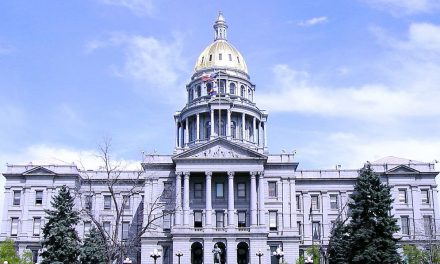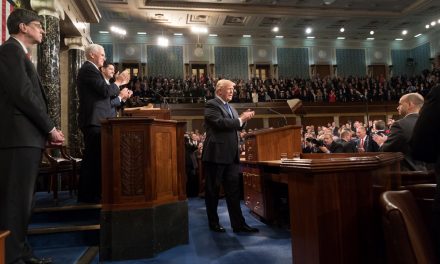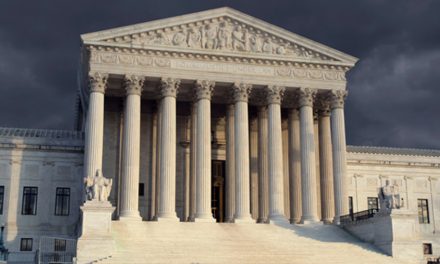House Majority Leader Steny Hoyer applauded the House Budget Committee for taking “the next step toward implementing President Biden’s American Rescue Plan to combat the COVID-19 pandemic and respond to its economic fallout.” Hoyer announced last week that the 591-page plan was a legislative priority for the week of February 23-26.
Hoyer wrote about the Rescue Plan, “The legislation they reported out incorporates recommendations from nine separate committees directing $1.9 trillion in emergency relief to Americans. This comprehensive package will expand testing and vaccine distribution to keep Americans safe and hasten the end of this dark chapter in our history. It will extend aid to businesses and workers to help them get by until it is safe to reopen fully, and it will provide teachers and school districts with resources for safe in-person learning.”
House Republican Whip Steve Scalise disagreed strongly with Rep. Hoyer, saying Democrats had abandoned bipartisanship to “prioritize liberal giveaways.”
“Democrats’ reconciliation package will only keep schools closed, bailout blue states, pay people not to work, and raise the minimum wage to $15/hour. Republicans insist that we must safely reopen schools, reopen the economy, speed up vaccine distribution, and effectively spend unobligated funding that remains. However, Democrats rejected hundreds of Republican amendments and any efforts to advance bipartisan solutions that are targeted, temporary, and tied to COVID relief,” Scalise said in a press release.
Here are some of the key provisions of the plan, according to Gabriel Rubin, from The Wall Street Journal, followed by some responses to the spending package. The package includes:
- A third round of stimulus checks to individuals: “The current House legislation contains $1,400 checks for individuals making less than $75,000 annually, and phased out amounts for people with higher incomes. Married couples who file taxes jointly can receive two $1,400 checks if their combined income is below $150,000.” Children and adult dependents are also eligible for the $1,400 payments.
- Unemployment payments: “Enhanced unemployment benefits totaling $300 a week are set to expire on March 14, creating a de facto deadline for Congress to act. The House package would extend the benefits until Aug. 29 and bump up the weekly amount to $400.”
- COVID-19 vaccines and testing: This includes “$8.75 billion to federal, state, local, territorial and tribal public-health agencies”; “around $20 billion going to federal biomedical research”; around $3 billion for a strategic national stockpile of vaccines”; and $25 billion for “testing, contact tracing and reimbursing hospitals for lost revenue related to the pandemic.”
- Increased child tax credits: The plan would raise the $2,000 Child Tax Credit to $3,000, set the credit at $3,600 for parents of children under age 6 and make parents of 17-year-olds eligible.”
- Federal minimum wage raised from $7.25 to $15 an hour: This would take place over a five-year period, but only if this provision can be included as a “budget item” according to House and Senate reconciliation rules.
- Funding for schools: About $130 billion to K-12 schools “to pay for reducing class sizes to accommodate social distancing, improving ventilation, hiring more janitors and providing more personal protective equipment.
- State and local aid: “The bill would provide $350 billion to state and local governments whose coffers have been hit by a loss of tax revenue during the pandemic, causing many to plan cuts to services and warn of tax increases to allow them to balance their budgets.”
NPR lists other provisions in the legislation, including: $7.35 billion for the Paycheck Protection Program (PPP); $25 billion for restaurants and bars through the Small Business Administration; almost $15 billion in funds for the Child Care and Development Block Grant program and an additional $1 billion to the Head Start Program; $25 billion for emergency rental assistance; and $50 billion in Federal Emergency Management Agency disaster relief.
When President Joe Biden announced the $1.9 trillion plan in January, the White House issued a statement that said, “President Biden’s $1.9 trillion American Rescue Plan is ambitious, but achievable, and will rescue the American economy and start beating the virus. Congress should act expeditiously to help working families, communities, and small businesses persevere through the pandemic.”
More recently, during a tour of the Pfizer Vaccine Manufacturing Facility in Kalamazoo, Michigan, the president said, “We need Congress to pass my American Rescue Plan that deals with the immediate crisis, the urgency. Now critics say my plan is too big, that it costs $1.9 trillion. That’s too much. Let me ask them, what would they have me cut? What would they have me leave out? Should we not invest $20 billion to vaccinate the nation? Should we not invest $290 million to extend unemployment insurance for the 11 million Americans who are unemployed so they can get by while they get back to work?”
But not everyone is convinced of the need for such a large spending bill, which follows $3.3 trillion in 2020 Covid relief appropriations. Rep. Steve Scalise calls the bill, “The Pelosi Payoff to Progressives Act” and says that “over $1 trillion in funds from previously-enacted laws remain unspent to fight COVID and reopen our economy.”
Scalise also says, “The reality is less than 9% of their bill goes to public health and combatting COVID-19. Much of the funding in Democrats’ partisan spending bill is appropriated for as long as 10 years for progressive programs that would extend far beyond the COVID-19 emergency. In fact, $670 billion is spent in 2022 or after.”
Scalise says there are many problems with the Rescue Plan:
- It “authorizes $126.8 billion to schools without any guarantee that schools provide the option of in-person instruction for America’s school children.”
- The bill “includes a $350 billion bailout for blue states.”
- Kills 1.4 million jobs by raising the national minimum wage by 107% to $15/hour.
- Spending includes, “$800,000,000 to distribute commodities worldwide, $270,000,000 in Arts and Humanities Endowments, $200,000,000 for the Institute of Museum and Library Services, [and] $100,000,000 for Silicon Valley Underground Transit Expansion.”
He notes that the bill also allows Planned Parenthood to receive funding through the PPP, “fails to include Hyde protections to prevent taxpayer dollars from paying for abortions, and requires taxpayers to subsidize health plans that potentially cover elective abortions.”
In an op-ed for The Wall Street Journal, Mitt Romney said that a group of senators “proposed a $618 billion compromise measure” and that $700 billion of the current legislation’s funding “wouldn’t be spent until 2022 or later, undermining the administration’s claim that the massive price tag is justified for urgent pandemic-related needs.”
Biden Press Secretary Jen Psaki defended the measure in a recent press conference. She said, “A CBO projection last week found that it would take the economy four years to bounce back and return to full employment without the Rescue Plan.”
Psaki added, “Studies by the Brookings Institution and Moody’s Analytics found that the economy could recover from the pandemic and return to full employment by the beginning of next year if the Rescue Plan is enacted. Moody’s also found that passing the Rescue Plan would double economic growth, returning the economy to full employment a full year faster.”
Related articles:
COVID Pork: $600 to You and Me; Millions for Gender Programs in Pakistan
New $900 Billion Relief Package Provides Direct Payments to Individuals, Families
WH Press Secretary Refuses to Guarantee Stimulus Money Won’t Go to Fund Abortions
Photo from REUTERS






